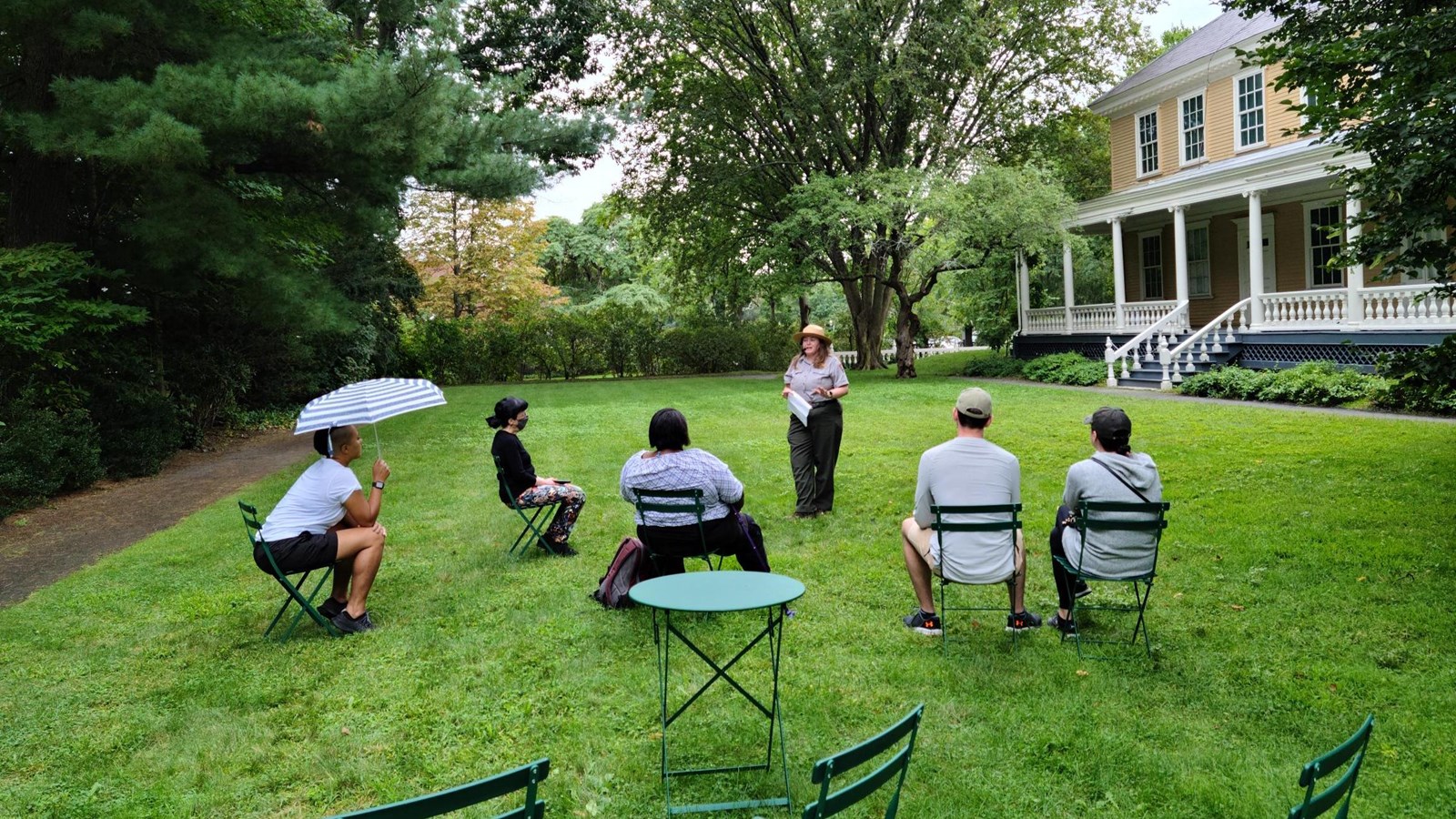Last updated: September 25, 2021
Place
East Lawn

NPS photo
The east lawn of the property has changed significantly since the Vassall era. First, it is important to know that since 1759, the size of the property has shrunk significantly. Consequently, many of the changes in this area were likely farther from the house than you see today.
Change to the east lawn first occured with Andrew and Elizabeth Craigie, who were both deeply interested in extravagance and horticulture. Early into their ownership of the house, the Craigies added additions to the back of the house and built large porches on either side (the same porches you see today). According to Henry Longfellow, the Craigies also had lovely gardens. It is likely some of these gardens existed in this general area, and it is known that one greenhouse existed east of the house as well.
The Longfellows adapted this space to suit their leisurely needs and provide space for raising a family. The enormous linden tree you see today was likely first planted around the time that the Longfellows bought the house in 1843. The Longfellows adored the linden tree, so much that when their gardener mistakenly cut off its low branches, Henry wrote in his journal, “O day of woe! ... My walk on the Eastern piazza is desecrated! I am wretchedly disturbed, and poor Fanny is in tears and quite heart broken.” In addition to maintaining the linden tree, the Longfellows also added balustrades to the porches (there were no railings when the Craigies built it), and planted small orchard in this area, although it is unknown exactly when it existed in the landscape.
